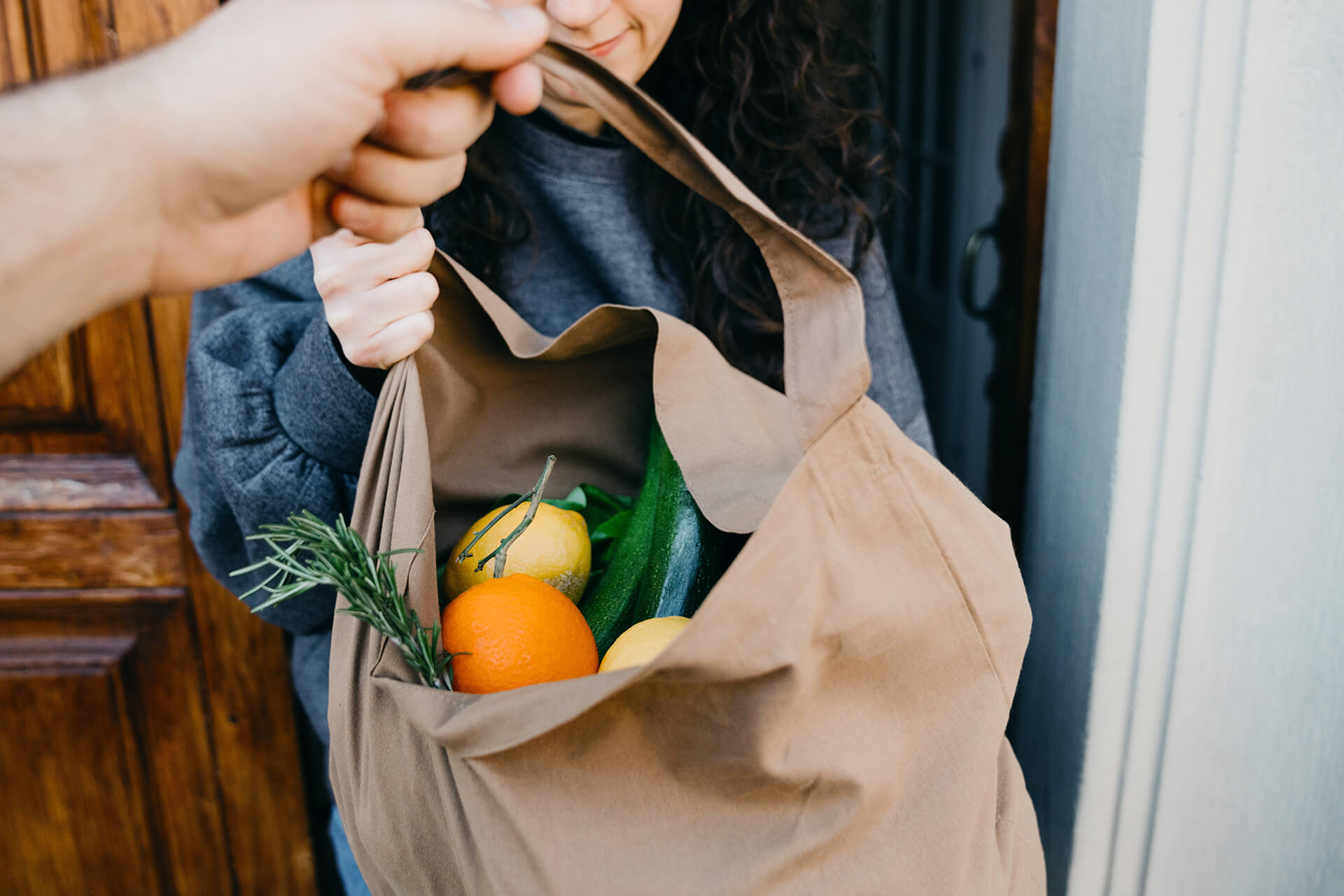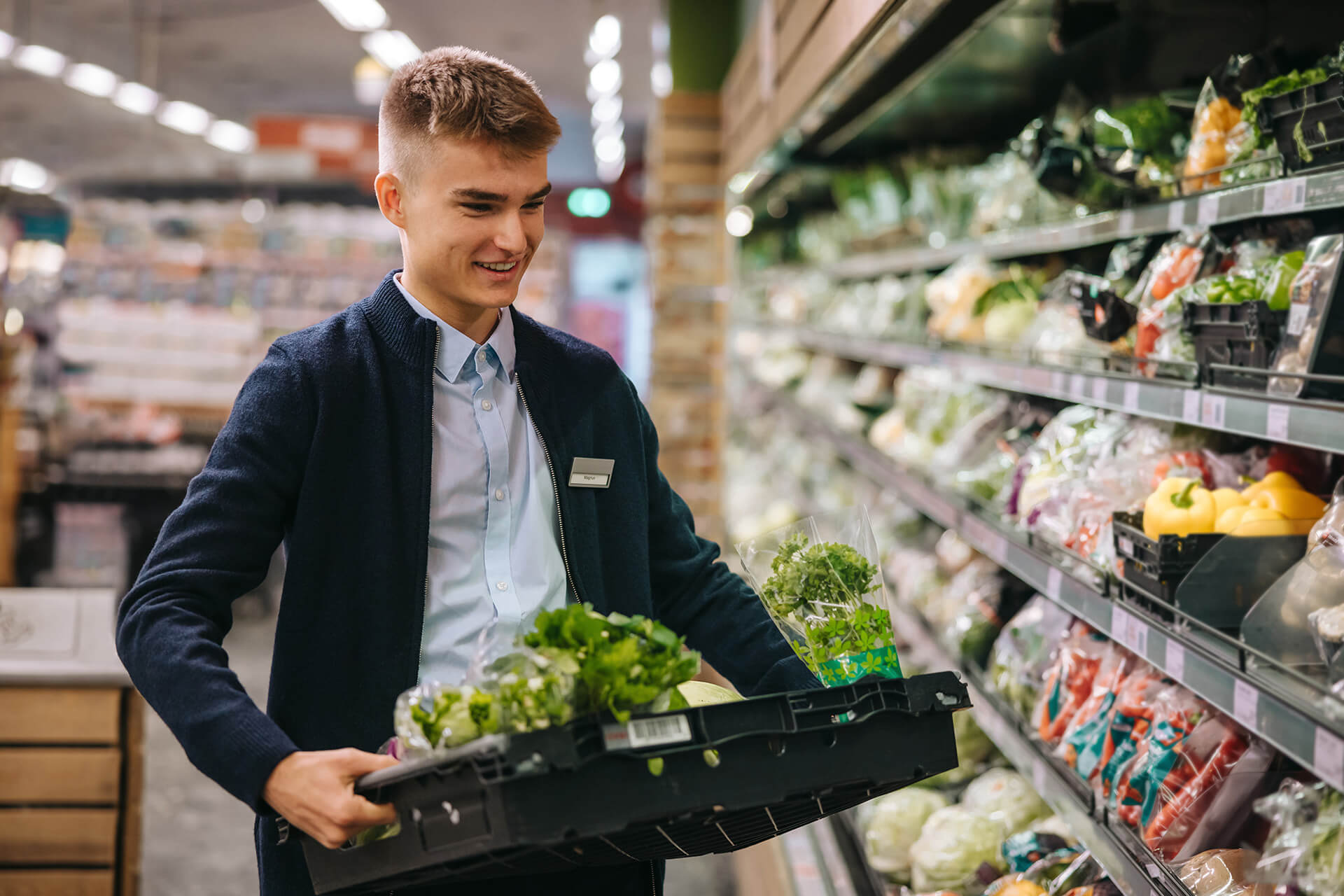We built our technology system for grocery
Interviewed by Hunter Williams and Rainer Münch
Interviewed by Hunter Williams and Rainer Münch

As the COVID pandemic struck, people who had never previously ordered grocery online began to send out for food deliveries. Ocado Group, a global provider of online grocery technology, found itself in the right place at the right time, and sales jumped.
Richard McKenzie is Chief Commercial Officer at Ocado Solutions, the division of Ocado which licenses technology to grocery retailers worldwide, where he is responsible for relationships with existing and future partners. Previously, he had been a strategy consultant in Europe and Asia, including a period as head of Oliver Wyman’s Asia-Pacific consumer goods and retail practice. He talked about the future of the online grocery market and the uniqueness of Ocado’s technological solution with Hunter Williams, a Chicago-based partner in Oliver Wyman’s Retail and Consumer Goods practice, and Rainer Münch, who leads the Retail and Consumer Goods team in Europe.
In the first few weeks of the pandemic, we saw 20 years of growth. The effect both on consumers and the industry was absolutely enormous. Now, about 70% of that growth seems to have stuck in most markets, and typically it's the players that managed to provide good service that gained and maintained share. The others, which were rushing in-store picks and not fulfilling baskets accurately, are now losing share.
Two years ago, when I joined Ocado, everybody was talking about micro fulfillment centers and using the space at the back of the store and so on. But that hasn’t played out, and the number of micro fulfillment centers is nowhere close to the numbers that were being projected. Challenges around waste, range, and supply chain have all come to light.
Huge amounts of capital are coming into Q-commerce, or quick commerce. I'm fairly skeptical of the economics of those businesses: They've got very small baskets, and they typically charge a price premium of around 30%. The grocers that win are always the grocers that can provide a full basket at a competitive price and do that efficiently. Real convenience, where a price premium is being charged, has only ever been 5% to 10% of the market.
It is much easier to win a customer who has already transitioned to shopping for groceries online, than it is to transition a customer online for the first time. In almost every market, the biggest single satisfaction factor is to get your basket delivered in full. A unique selling point of our centralized fulfillment is extremely high fill rates. We think our system will win that battle.

There is a move towards wanting delivery sooner after placing the order, and we are reducing the size of fulfillment centers and operating them as networks. Also, with our latest innovations we are enabling vans to go out with a mix of short lead time and next day/planned deliveries (with Ocado Swift Router).. Ultimately, grocery baskets are not super-profitable things, so volume and efficiency count for a great deal. Now we are able to deploy a higher proportion of short lead time orders alongside longer lead time deliveries on the same routes, using centralized fulfilment and maintaining a high van fill (with 20+ orders per van). So we are maintaining hyper efficient operations and offering customers more flexibility on when they want their deliveries. This is a big step.
Yes. There are two aspects to it. One is that we have got the most efficient system, which will now include things like robotic pick and using machines to load the totes into frames. Our labor productivity is getting better and better. This is enabled by 2,500 to 3,000 technologists, more than any other grocer in the world is dedicating to online food retail. We are ahead and getting further ahead, given the resources we are putting in.
The other thing is that we started as a grocer, not as a technology company, and we built our system for grocery, whereas most other people have come to it the other way round. That meant we had to be joined up, and things like extremely high fulfilment rates and basket accuracy are standard in our system: When you order a product as a customer, you know you're going to get it. If you just buy pieces of third-party kits and integrate those, it’s quite difficult to get true availability-to-promise on your website.
Another aspect of thinking like a grocer is that we recalculate the van routes in real time every time a customer places an order. Sometimes it takes 10 minutes to drop to a customer; sometimes three. Our routing software knows this, because we log how long it takes to drop to each customer.
We build a lot of contingencies and resilience into the system. Ocado is at heart built by engineers, and engineers are very conservative people who love building redundancy into the format. Everything is massively parallel. If one of our robots falls over, it doesn’t matter, because there are hundreds of robots. Stock is almost always at more than one location in the grid, so it doesn't matter if one cell goes out of action. The picking is always happening in 40-plus locations, so if one of the pick stations doesn't work, we only lose less than 5% of the capacity.
One answer is the scale of the investment and the length of time you need to do this. The other is that we typically partner with retailers in various markets, but our aim is not to work for every grocer out there. Our goal in the long run is to work with leading players. We’re aiming to take leadership positions in each market.

Grocery is quite a lonely world: If you are a grocer in one country, you can't actually talk to your competitors, for obvious reasons. Our partners get tremendous joy from being able to talk to somebody in a similar situation in a non-competing geography. Some of the most interesting conversations are at working level: “How did you think about your van routing? How do you think about the customer interface?” That idea swapping is great to watch.
We are a believer in ecosystems, which will include micro fulfillment centers (MFC) and click-and-collect options. The CFC is the single most efficient model for fulfilling main basket grocery orders. That said, if you go into the outback of Australia with our partner Coles, there are very few places we are going to ever see a population density that justifies a CFC. In that case, there clearly is a role for store pick.
For immediate orders – less than an hour – we need to be closer to the customers than a big CFC will make possible. For those orders, where you can charge a price premium, you need micro fulfillment centers, which is how we're building the Zoom business in London. There, we’re taking the same kit and scaling it down. It's a narrower range, and it's been modified slightly to adapt to couriers. But we're still offering 10,000 stock keeping units (SKUs) in our Zoom business. Only a small portion of those are priced at a premium, and a negligible number compared to what the Q-commerce players are charging.
At Ocado, we have always been huge fans of niche brands, and there are lots of examples that listed on Ocado and then went national. If you put a trial into 100 stores and it doesn't sell, you've got to get rid of the stock from 100 stores. With us, you put it into one customer fulfillment center, and if it doesn't work, it's pretty easy to get rid of. Our ability to trial niche brands and help them explode has been one of our strengths.
That means we're differentiated. We handle 50,000 SKUs, and a high proportion of those are not available in mainstream grocers. We have more freedom in pricing, and we give our customers a choice they don't get elsewhere. I can now buy many more Japanese ingredients on Ocado than before. Those niche brands give you really high customer stickiness.

Voices of the Industry
HOME
Voices of the industry
Foreword
How Retailers Are Turning Upheaval Into Opportunities
Rami Baitieh
To Be The Best Digital Retail Company, We Have To Put People At The Center Of Our Activities
Duncan MacNaughton
Consumer Goods Manufacturers must listen to their workforce
Silviu Popovici
we put sustainability at our core, to create positive change for both planet and people
Thomas Jonas
Fy will feed astronauts!
Marcel Haraszti
We made one of Europe’s most ambitious retail transformations happen during COVID
Malina Ngai
We’re working relentlessly to promote inclusion and diversity
Philippe Guettat
Premiumization has been key to the success of our wine and spirits brands
Nina Jönsson
Our store of the future must be a destination: full of inspiration, innovation, and sustainability
Richard McKenzie
We built our technology system for grocery
